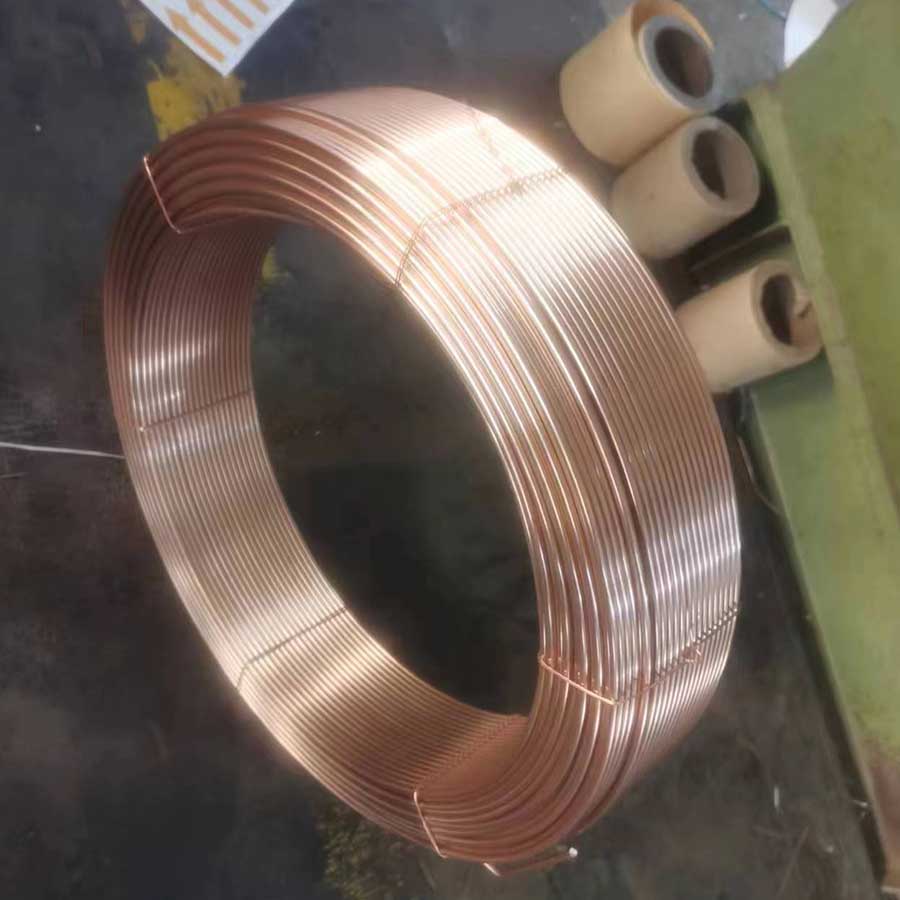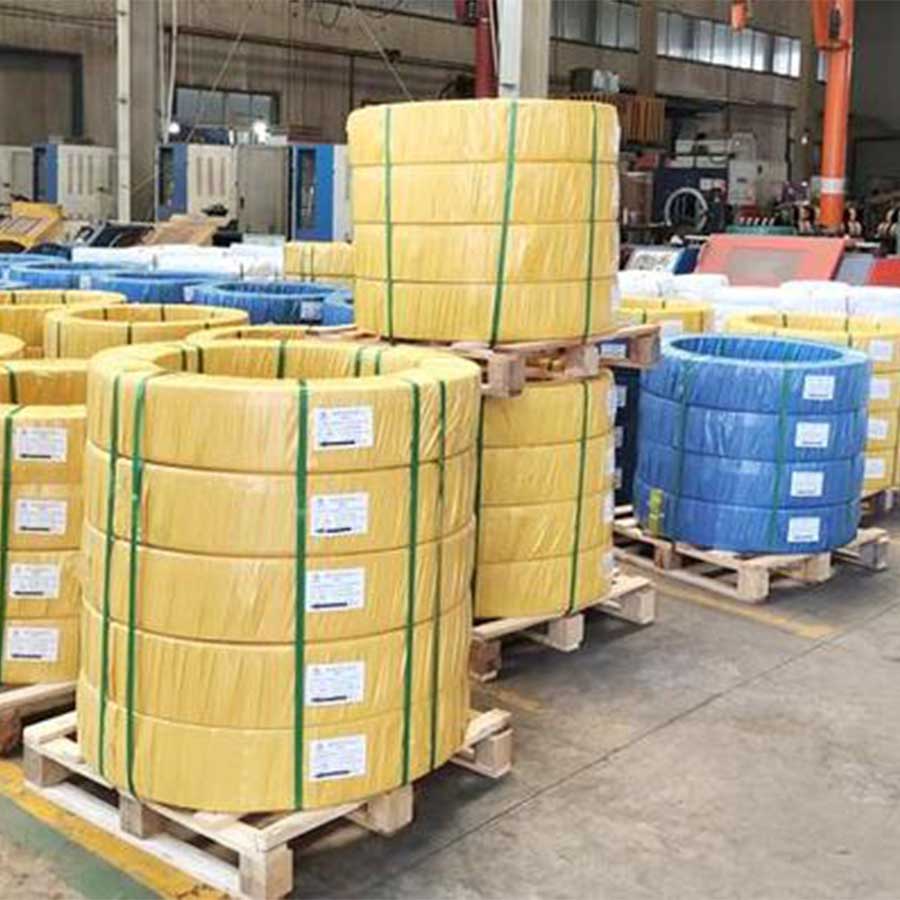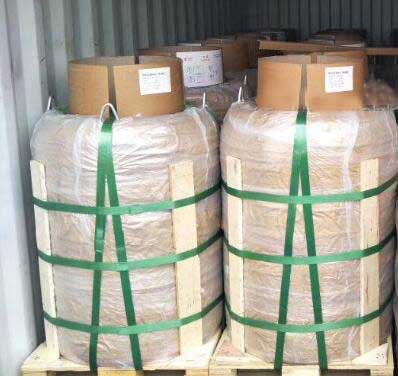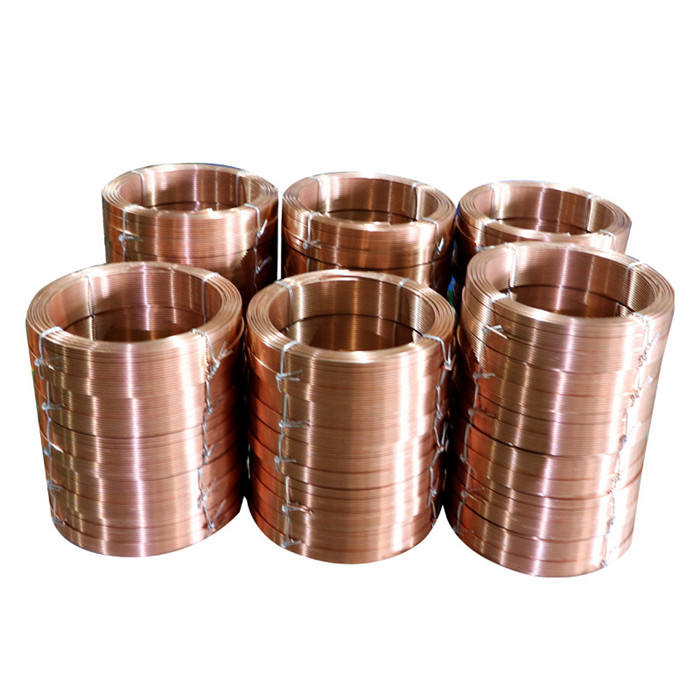Top-Grade Submerged Welding Wire: Superior Quality & Performance
Advancing Industrial Fabrication with submerged welding wire Technology
In the demanding landscape of heavy fabrication, the integrity and efficiency of welding processes are paramount. Among the array of welding consumables, submerged welding wire stands out as a critical component, enabling high-quality, high-deposition rate welding for crucial industrial applications. This specialized wire, used in Submerged Arc Welding (SAW), offers unparalleled advantages in productivity, weld quality, and structural reliability. Its strategic selection and application directly impact the performance and longevity of massive structures ranging from pressure vessels and pipelines to shipbuilding components and heavy machinery.
The continuous evolution of materials science and manufacturing techniques has led to the development of advanced submerged welding wire types, each meticulously engineered to meet specific metallurgical requirements and operational challenges. As global industrial demands intensify, understanding the intricacies of these consumables, their manufacturing excellence, and their optimal deployment becomes essential for B2B decision-makers and engineering professionals striving for superior output and cost-effectiveness.
Current Industry Trends and Market Outlook
The global market for submerged welding wire is experiencing robust growth, driven by expansion in infrastructure, energy, and manufacturing sectors worldwide. Key trends include an increasing demand for high-strength low-alloy (HSLA) steels, which necessitate specialized wires capable of delivering superior mechanical properties and toughness. There's also a significant push towards automation in welding processes, further enhancing the appeal of SAW due to its inherent suitability for automated setups, leading to higher productivity and consistent weld quality.
Environmental regulations and the pursuit of sustainability are also shaping the market, with a growing emphasis on consumables that offer reduced fume emissions and energy efficiency. From the perspective of sourcing, the market for china submerged welding wire continues to expand, offering competitive advantages in terms of scale and production efficiency. This makes options for wholesale submerged welding wire particularly attractive for large-scale projects and distributors seeking cost-effective, high-volume supply chains.
Technological advancements are focused on developing wires with enhanced resistance to hydrogen-induced cracking, improved low-temperature toughness, and better arc stability. These innovations are critical for applications in extreme environments, such as offshore oil and gas platforms and arctic pipelines. The integration of advanced data analytics and IoT in welding operations is also creating demand for wires that perform consistently within digitally monitored systems, allowing for predictive maintenance and optimized welding parameters.

Manufacturing Process Flow of Submerged Welding Wire
The production of high-quality submerged welding wire is a meticulously controlled multi-stage process, designed to ensure metallurgical consistency, precise dimensions, and optimal performance in demanding welding environments. Each step adheres to stringent international testing standards such as ISO 14700, ANSI/AWS A5.17/A5.17M, and EN ISO 14171, ensuring reliability and superior weld characteristics.
1. Raw Material Selection & Preparation
High-grade steel billets, typically low-carbon steel or alloy steel, are selected based on the desired chemical composition and mechanical properties of the final wire. These billets undergo rigorous chemical analysis to confirm compliance with specifications, ensuring the foundational quality of the submerged welding wire.
2. Hot Rolling & Wire Rod Formation
Billets are heated to precise temperatures and then passed through a series of hot rolling mills. This process reduces the cross-sectional area and forms them into wire rods of specific diameters. This stage is crucial for grain refinement and establishing the initial microstructure.
3. Pickling & Surface Treatment
The wire rods undergo pickling in acid baths to remove mill scale and surface impurities, followed by rinsing and coating with a lubricant. This prepares the surface for subsequent cold drawing and prevents premature die wear.
4. Cold Drawing
Through a series of drawing dies, the wire rods are cold-drawn to their final desired diameter. This process significantly increases tensile strength and improves surface finish, critical for consistent arc performance of the submerged welding wire.
5. Copper Coating (if applicable)
For certain applications, the wire may receive a thin, uniform copper coating. This enhances electrical conductivity, improves feeding characteristics, and provides corrosion resistance during storage, extending the service life.
6. Heat Treatment & Spooling
Depending on the alloy, the wire might undergo specific heat treatments to achieve desired mechanical properties. Finally, the finished submerged welding wire is precision-wound onto spools or drums, carefully inspected for winding defects and packaging quality.
Throughout this entire process, advanced quality control measures are implemented. This includes spectral analysis for chemical composition, tensile testing for mechanical strength, and microscopic examination for microstructure verification. These stringent checks ensure that each batch of submerged welding wire meets the highest industry standards, delivering advantages such as energy saving through optimized deposition rates and superior corrosion resistance in the final weldment, particularly vital in industries like petrochemical and water supply & drainage. The typical service life of structures fabricated with properly selected and applied submerged welding wire can easily exceed several decades, underlining its long-term value.
Technical Specifications and Parameters
The performance of submerged welding wire is defined by a comprehensive set of technical specifications, encompassing its chemical composition, mechanical properties, and physical dimensions. Understanding these parameters is crucial for engineers to select the appropriate wire-flux combination for specific base metals and application requirements. Manufacturers adhere to international standards like AWS A5.17/A5.17M (Specification for Carbon Steel Electrodes and Fluxes for Submerged Arc Welding) and EN ISO 14171 (Welding consumables - Solid wires and tubular cored electrodes for submerged arc welding of non-alloy and fine grain steels), ensuring global interoperability and consistent quality.
Typical Product Specification Table for Submerged Welding Wire (e.g., AWS EM12K equivalent)
| Parameter | Unit | Typical Value/Range | Standard |
|---|---|---|---|
| Diameter | mm (in) | 2.0 - 6.4 (5/64 - 1/4) | AWS A5.17 |
| Tensile Strength | MPa (ksi) | 490 - 590 (71 - 85) | AWS A5.17 |
| Yield Strength | MPa (ksi) | 400 - 480 (58 - 70) | AWS A5.17 |
| Elongation | % | 22 - 28 | AWS A5.17 |
| Impact Toughness (Charpy V-notch) | Joules @ -29°C | ≥ 27 (20 ft-lb) | AWS A5.17 |
| Carbon (C) | % | 0.06 - 0.15 | Typical Wire Comp. |
| Manganese (Mn) | % | 1.00 - 1.50 | Typical Wire Comp. |
| Silicon (Si) | % | 0.10 - 0.35 | Typical Wire Comp. |
These specifications ensure the weld metal's ability to resist cracking, withstand mechanical stresses, and operate effectively within its designed service temperature range. Proper selection, considering both the submerged welding wire and the corresponding flux, is paramount for achieving the desired metallurgical and mechanical properties in the final weldment.

Application Scenarios and Target Industries
The robust and efficient nature of submerged welding wire makes it indispensable across a multitude of heavy industries where large, high-quality welds are required. Its ability to produce deep penetration, high deposition rates, and smooth weld beads significantly benefits applications demanding structural integrity and long-term durability.
-
Petrochemical Industry
For the fabrication of pressure vessels, storage tanks, heat exchangers, and pipelines that operate under extreme pressure and temperature, submerged welding wire ensures the necessary structural integrity and resistance to corrosive media, thereby extending equipment lifespan and minimizing downtime.
-
Shipbuilding and Offshore Structures
From ship hulls and decks to offshore drilling platforms and wind turbine foundations, SAW with submerged welding wire is crucial for joining thick plates, offering high productivity and excellent mechanical properties, vital for structures exposed to harsh marine environments.
-
Construction and Infrastructure
In the construction of bridges, heavy steel structures, railway rolling stock, and large diameter pipes for water supply & drainage systems, the high-speed and quality welding offered by submerged welding wire significantly reduces fabrication time while ensuring robust connections.
-
Heavy Machinery and Equipment
For earthmoving equipment, agricultural machinery, and industrial components that endure heavy loads and abrasive conditions, SAW delivers durable and fatigue-resistant welds. This ensures the long-term reliability and operational efficiency of capital-intensive assets.
-
Power Generation
In the manufacturing of boilers, turbines, nuclear reactor components, and other power plant infrastructure, the precision and metallurgical control offered by submerged welding wire are critical for meeting stringent safety and performance standards.
The ability of SAW to accommodate various joint designs, from single-pass butt welds to multi-pass groove welds, further broadens the applicability of submerged welding wire across these diverse and demanding sectors.

Key Technical Advantages of Submerged Welding Wire
The inherent characteristics of submerged welding wire, when coupled with the SAW process, offer a compelling suite of technical advantages that translate directly into operational efficiencies and superior product quality for B2B enterprises.
- High Deposition Rate: SAW is renowned for its high metal deposition rates, significantly outperforming other arc welding processes. This leads to faster fabrication times and reduced labor costs, particularly in the welding of thick sections, offering substantial energy saving benefits per unit of deposited metal.
- Excellent Weld Quality and Aesthetics: The flux blanket completely covers the arc, protecting the molten weld pool from atmospheric contamination. This results in very clean, smooth, and uniform weld beads with minimal spatter, excellent surface finish, and deep penetration, reducing the need for post-weld grinding and rework.
- Superior Mechanical Properties: The controlled cooling rates under the flux, combined with optimized wire and flux compositions, allow for the production of welds with superior mechanical properties, including high tensile strength, yield strength, and impact toughness, even at low temperatures. This also contributes to enhanced corrosion resistance in the final weldment.
- Reduced Fume and Flash: The submerged nature of the arc drastically reduces weld fumes and arc flash, creating a safer and more comfortable working environment for operators. This is a significant advantage in compliance with occupational health and safety regulations.
- Deep Penetration and Large Weld Pool: SAW can achieve very deep penetration, often allowing for single-pass welds on thick plates where multiple passes would typically be required with other processes. This simplifies joint preparation and further increases efficiency.
- Versatility in Automation: Submerged welding wire systems are easily integrated into automated and robotic welding setups, ensuring highly consistent weld quality and throughput, critical for mass production and large-scale projects.
These advantages collectively position submerged welding wire as a prime choice for critical applications where quality, efficiency, and safety cannot be compromised.
Vendor Comparison and Selection Criteria
Selecting the right supplier for submerged welding wire is a strategic decision that impacts project timelines, quality, and overall cost-efficiency. While many suppliers offer wholesale submerged welding wire, discerning buyers prioritize vendors based on a comprehensive set of criteria that extend beyond mere pricing.
Key Factors for Vendor Evaluation:
- 1. Product Quality & Consistency: The ability to consistently deliver submerged welding wire that meets or exceeds international standards (e.g., AWS, ISO, CE) is paramount. Look for vendors with robust quality control processes and a proven track record.
- 2. Technical Expertise & Support: A reputable vendor provides comprehensive technical support, including advice on wire-flux combinations, welding parameters, and troubleshooting. This is crucial for optimizing welding procedures and achieving desired metallurgical properties.
- 3. Certifications & Compliance: Verify that the vendor and their products hold relevant industry certifications (e.g., ISO 9001 for quality management, specific type approvals from classification societies like ABS, Lloyd's Register).
- 4. Customization Capabilities: For unique applications or specific alloy requirements, a vendor capable of providing customized submerged welding wire solutions can be a significant advantage.
- 5. Supply Chain Reliability: Especially for china submerged welding wire or wholesale submerged welding wire, consistent supply, lead times, and logistical efficiency are critical to avoid project delays.
- 6. Years of Service & Client Portfolio: Vendors with extensive experience and a diverse portfolio of satisfied clients in similar industries demonstrate reliability and market credibility.
Conceptual Vendor Comparison Matrix
| Feature/Criterion | Tier 1 Global Manufacturer | Specialized Regional Supplier | Large Scale China Submerged Welding Wire Producer |
|---|---|---|---|
| Product Range | Extensive, Niche Alloys | Focused, Application-Specific | Broad, Standard Types |
| R&D and Innovation | High Investment, Cutting-Edge | Moderate, Problem-Solving | Cost-Efficient Replication |
| Technical Support | Global Experts, On-Site | Strong Local Presence | Standardized, Remote |
| Price Competitiveness | Premium | Competitive | Highly Competitive |
| Lead Times & Logistics | Excellent Global Network | Optimized Local Delivery | Efficient for Large Orders |
| Customization | High Flexibility | Moderate Flexibility | Limited to Volume |
By carefully weighing these factors against specific project requirements, businesses can forge reliable partnerships for their submerged welding wire supply.
Customized Solutions for Specialized Applications
While standard submerged welding wire grades meet the requirements of many industrial applications, specialized projects often demand tailored solutions. Leading manufacturers understand that specific operating conditions—such as extremely low temperatures, highly corrosive environments, or critical fatigue loads—necessitate customized wire compositions and properties.
Customization involves working closely with clients to develop submerged welding wire that precisely matches the metallurgical requirements of challenging base materials and desired weld characteristics. This can include modifying alloy content (e.g., adding Ni, Mo, Cr) to enhance toughness, strength, or corrosion resistance. It also extends to optimizing manufacturing parameters to control microstructures, ensuring superior performance in unique scenarios, particularly for clients seeking specialized wholesale submerged welding wire for demanding contracts.
Such bespoke solutions are critical in sectors like defense, aerospace, and advanced nuclear power, where off-the-shelf products may not suffice. The ability of a supplier to offer such customization capabilities, backed by comprehensive R&D and testing, significantly enhances their value proposition to B2B clients seeking peak performance and reliability.

Application Case Studies & Customer Experience
Case Study 1: Large Diameter Pipeline Fabrication
A major energy infrastructure company undertook the construction of a critical natural gas pipeline spanning hundreds of kilometers. The project demanded high-speed, high-quality welding of thick-walled steel pipes. By utilizing a high-efficiency submerged welding wire (AWS EH14 grade) in conjunction with an optimized flux, the fabrication team achieved deposition rates of up to 25 kg/hr per head in multi-wire SAW setups. This dramatically reduced the welding time per joint by 30% compared to previous projects using conventional methods, resulting in significant cost savings and earlier project completion. Weld quality met stringent API 1104 standards, demonstrating excellent root fusion and consistent mechanical properties, even in challenging environmental conditions.
Customer Feedback: "The reliability and consistent performance of their submerged welding wire were instrumental in maintaining our aggressive project schedule and achieving superior weld integrity under intense scrutiny."
Case Study 2: Fabrication of Heavy Mining Equipment
A leading manufacturer of heavy mining excavators faced challenges in welding thick, wear-resistant steel components, requiring exceptional toughness and fatigue resistance. A custom-formulated submerged welding wire, designed for high-strength low-alloy steels (HSLA), was recommended and implemented. This solution provided weld metal with enhanced impact toughness at sub-zero temperatures (Charpy V-notch >50 J at -40°C), crucial for equipment operating in harsh cold climates. The controlled chemistry of the wire minimized weld defects and provided robust, crack-resistant joints, significantly improving the operational lifespan of the excavator buckets and frames.
Customer Feedback: "The customized submerged welding wire solution not only met our stringent specifications but also contributed to a noticeable reduction in warranty claims related to weld failures in the field."
Case Study 3: Pressure Vessel Manufacturing in China
A prominent pressure vessel fabricator in China, a key player in the china submerged welding wire market, required reliable and economically viable welding solutions for large-scale boiler drums. They partnered with a supplier offering wholesale submerged welding wire, specifically an EN ISO 14171 S2Mo grade wire. This enabled efficient multi-pass welding of thick-walled manganese-molybdenum steel, providing welds with excellent creep resistance and high temperature strength, essential for long-term operation. The consistent quality and competitive pricing facilitated smooth production flow and helped the client meet demanding international project deadlines.
Customer Feedback: "Access to high-quality wholesale submerged welding wire from a reliable Chinese manufacturer has significantly boosted our production capacity and competitiveness in the global pressure vessel market."

Trustworthiness: FAQ, Lead Time, Warranty, and Support
Frequently Asked Questions (FAQ)
-
Q: What is the primary advantage of using submerged welding wire over other welding methods?
A: The primary advantage is its very high deposition rate and excellent weld quality, with deep penetration, minimal spatter, and superior mechanical properties. The process is also highly efficient for thick materials and ideal for automation, leading to significant productivity gains and reduced labor costs.
-
Q: How do I choose the correct submerged welding wire and flux combination?
A: Selection depends heavily on the base metal type, desired mechanical properties of the weld metal, and specific application requirements. Consulting with experienced welding engineers or the supplier's technical team is crucial. They can recommend optimal wire-flux pairings based on industry standards (e.g., AWS classifications) and project specifications.
-
Q: Is submerged welding wire suitable for outdoor welding?
A: While the flux blanket protects the arc from atmospheric contamination, the SAW process generally requires a controlled environment due to the granular nature of the flux. High winds can disrupt the flux blanket. For outdoor applications, adequate wind shielding is often necessary to maintain weld quality.
Lead Time and Fulfillment
For standard submerged welding wire products, typical lead times range from 2 to 4 weeks, depending on order volume and current stock levels. For wholesale submerged welding wire orders or customized solutions, lead times may extend to 6-8 weeks to accommodate specific production runs and quality assurance processes. We operate with a robust global logistics network to ensure timely and efficient delivery to diverse international destinations, including direct shipping from china submerged welding wire manufacturing hubs.
Warranty Commitments
Our submerged welding wire products come with a standard 12-month warranty from the date of purchase, covering manufacturing defects and material inconsistencies. This warranty ensures that our products meet or exceed the published technical specifications and industry standards. In the unlikely event of a quality issue, we are committed to prompt investigation, replacement, or credit, adhering to our strict quality assurance protocols.
Customer Support and Technical Assistance
We pride ourselves on providing comprehensive customer support, from initial inquiry to post-purchase technical assistance. Our team of experienced welding engineers and technical specialists is available to provide guidance on product selection, welding parameters, process optimization, and troubleshooting. We offer both remote and, where necessary, on-site support to ensure our clients maximize the performance and efficiency of their submerged welding wire applications. Our commitment is to partner with our clients for their long-term success.
References
- American Welding Society. (2022). AWS A5.17/A5.17M:2022 Specification for Carbon Steel Electrodes and Fluxes for Submerged Arc Welding. Miami, FL: American Welding Society.
- DVS (Deutscher Verband für Schweißen und verwandte Verfahren e.V.). (2018). Welding Technology: Consumables and Processes. Düsseldorf: DVS Media GmbH.
- International Organization for Standardization. (2020). ISO 14171:2020 Welding consumables - Solid wires and tubular cored electrodes for submerged arc welding of non-alloy and fine grain steels - Classification. Geneva: ISO.
- The Welding Institute (TWI). (2021). Submerged Arc Welding (SAW). Cambridge, UK: TWI Ltd.
- ASM International. (2007). Welding, Brazing, and Soldering, Vol. 6, ASM Handbook. Materials Park, OH: ASM International.
-
High-Quality Welding Electrodes 4.0mm*400mm for Industrial Use | Steel Tools ChinaNewsNov.24,2025
-
Explore the Benefits and Uses of 2.6mm Welding Electrode 6013 | Global GuideNewsNov.23,2025
-
Understanding CO2 Welding Wire Price: Global Impact, Trends, and TipsNewsNov.22,2025
-
Top Guide to Welding Wires CO2 – Specifications, Benefits & Industry UsesNewsNov.22,2025
-
Comprehensive Guide to Welding Electrode 6011 – Global Applications & BenefitsNewsNov.21,2025
-
AWS E6013 Welding Rod-HEBEI YUJINHONG TECHNOLOGY CO.,LTD.|All-Position Carbon Steel ElectrodeNewsNov.21,2025


